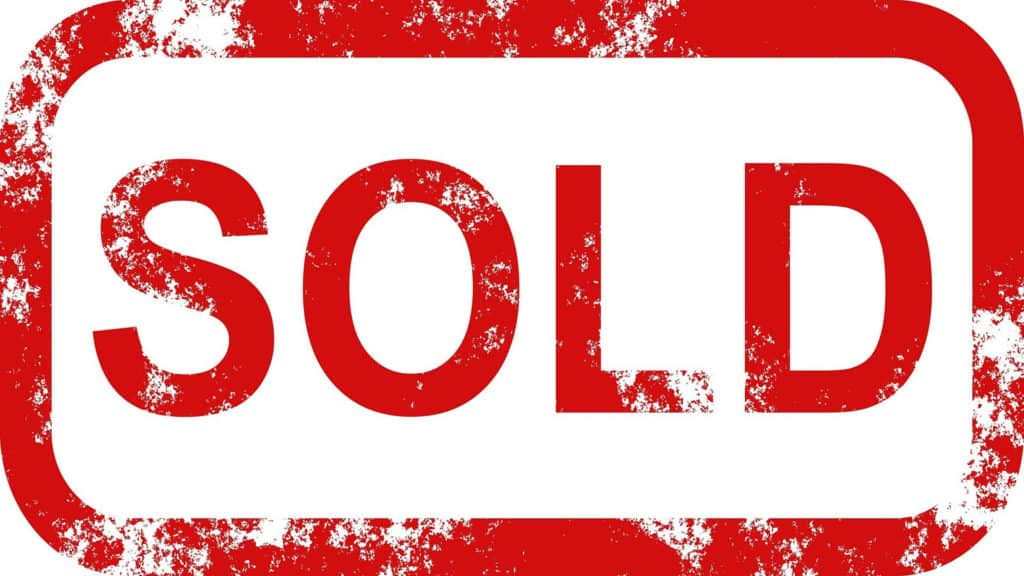You want to make money online. Finding a method of passive income, that keeps generating income with little to no work – after an initial effort – is an ideal way to increase your wealth through the Internet.
One of the best ways of earning this type of income is through domain flipping. Since the advent of the World Wide Web, domain names have been a hot commodity.
But this industry has not died down one bit. There is still money to be made with the purchase and selling of domain names.
If you want to make money with domains, you have come to the right place!
Page Contents
The Domain Flipping Ten Commandments: All You Need To Know
We have put together this dense guide on how to maximize domain flipping and make serious money.
We will flip back and forth with the practical aspects of purchasing and selling as well as the key research methods needed to find your perfect domain name.
Follow these Ten Commandments and you will become a professional domainer in no time!
1. What’s the Big Deal?

Before jumping into the practical, it is crucial that you understand what the big deal with domain names are in the first place. Why are they a hot commodity? And what makes a domain name profitable – some more than others?
Here are the general factors that make a domain name profitable:
- Length: the shorter the name, the better. 3-4 letter names are especially profitable
- Age: the longer a domain name has been registered, the greater its ‘authority’ and popularity
- Branding: a memorable name that can be used (or is used) as a brand name increases the domain name’s value
- Extension: the three-letter domain extension also adds to the domain name’s value – with .com remaining the most popular
So when looking for a domain name, you want to see if they fit some or all of the above criteria. But even if they fit none, they can still pull a profit – which is why this business has not died down.
2. Look for Expired Domain Names
So now that you know the basic criteria that can determine a domain name’s value, you want to start looking for available domain names.
The first batch of domain names to look for are expired domain names.
These are domain names that were registered and not renewed. Once a year, the owner of the domain name has to pay a fee to keep ownership of the domain name for the following year.
If the domain name is not renewed, it expires. Often these expired domain names are highly advertised on domain marketplaces as their value may be great.
But before you purchase every expired domain name in your sight, you want to make sure it has value.

A great tool is Moz’s Domain Authority. Using this tool will help you study the metrics of the domain name. A domain name with the following metrics is an attractive purchase:
- Backlinks: It has been linked to many times from other established websites
- Rank: Domain Authority ranks the popularity of a domain name through search engines. The closer to 100 the better!

Furthermore, you should run the domain name through the Internet Archive’s Wayback Machine. This will allow you to see any past websites created through this domain name. Who knows? You may run into one that you recognize!
If the domain name was in use to create a popular website, chances are, it retains its value. But the general idea is that the domain name has to have attracted lots of traffic throughout its history.
3. Look for Cheap Domain Names

With this one you have to be a bit careful as cheap does not always mean profitable. But if you can get your hands on a low-cost domain name and sell it for a handsome profit, you will be glad you did!
Look for domain names that are low in price. These have a low initial cost and a low renewal fee – often these will be exactly the same price.
Once you have shortlisted a few, do your usual research on the popularity of the domain name. Search for the domain name’s history – does it receive lots of traffic? Was it used for creating popular websites?
If your cheap domain name meets the criteria then it may be worth your investment. You may not always get lucky with this, but it is not a bad idea to start with – especially for an amateur domain flipper.
4. Plan Your Budget

This may seem like a diversion – but it is crucial before we go on any further.
It has to be understood that you cannot always expect a profit to be in the millions. And one cannot expect a domain name to be sold in a matter of months. You may at times need to hold a domain name for longer than you would hope for! Make sure you are willing to take this financial risk first.
Let us say you want to start small. You want to purchase only one domain name and try to sell it. You have set aside $100 for this domain name. Once fees for this domain name (initial purchase fee and renewal fee) exceeds $100, you will let go of the domain name – even if this means you will not sell it and take a loss.
This mentality helps you calculate risk. It is seldom that a domain name sells overnight, whether the profit is minimal or absurdly high. Therefore, you must decide how much money you are willing to lose before diving in.
But do not worry – as you become more successful, you will likely be able to take on bigger risks. The $100 per domain name budget may well increase to $1000 per domain name.
5. Head to the Marketplace

Now we come to the process of purchasing the domain names from the best marketplaces.
Domain names can be purchased from web hosting services, domain name registrars, auction sites, or directly from the owner – using an escrow service to make the payment.
For a beginner, we recommend purchasing a domain name from a domain marketplace. Popular marketplaces include Sedo, ExpiredDomains, and Flippa.
At the beginning of your domain flipping career, these marketplaces are where you should scout your perfect domain name. Domain names found in a marketplace are likely to be more popular and have more value than domain names being purchased for the first time through a domain registrar or web hosting service.
6. Keyword Research

Now let us return to research. In marketing, one of the key research methods is keyword research. This is a method by which researching highly searched for keywords in a search engine to determine the popularity of a topic. This same method can be used when establishing criteria to purchase a domain name.
Let us suppose you are interested in cryptocurrency and wish to purchase a domain name that falls in this category – or caters to this niche.
After doing your keyword research relating to cryptocurrency, you will likely come across the keyword: bitcoin. If so, it means that bitcoin is a popular topic in the cryptocurrency sphere.
Now, you want to purchase a domain name that relates to bitcoin. In your domain marketplace of choice, you can search for ‘bitcoin’ and you will see a plethora of domain names that are related to this subject and that have the word ‘bitcoin’ in their name.
Now you must conduct your usual research on the popularity of these domain names before purchasing one.
Note: This may be a lengthy process and you should not be hasty! Many topics may have fierce competition. Many topics that you personally find interesting, may not be a popular keyword in search engines. Be patient with your research and take your time in purchasing a domain name – hold off on purchasing one if need be.
7. Market Your Domain Name (The Basics)
So now you have a domain name under your belt. Ideally, this domain name has already gained lots of popularity.
Nevertheless, you want to increase this popularity while it lingers in the domain marketplace.
So how do you do this? Like any other Internet entity, a domain name can be marketed. If you have any experience in digital marketing, you will see that marketing a domain name is not any different.
Here are a few ways to market your domain name:
- Social Media: Use your social media platforms to promote the sale of your domain name
- Messaging: Use a messaging service (from Facebook Messenger to WhatsApp to text messages) to promote the sale of your domain name
- Forums: Find forums and message boards that attract domain name buyers. This is an ideal place to promote your domain name
- Content: Create content that promotes your domain name and notes that it is on sale. We will cover this more in the next step
- Email: An email blast or an email newsletter is a great way to reach a mass audience who may be interested in buying your domain name
You must market your domain name on a regular basis. Do not assume that because it is popular that it will remain popular and immediately have a group of buyers fighting over its ownership!
8. Market Your Domain Name (Advanced)
The advanced methods of marketing your domain name are broken down into creating content and direct marketing.
With creating content, you have a variety of options for promoting your domain name and its sale. This can range from blog posts to graphics, to Youtube Videos.
You want to discuss the uniqueness of your domain name before jumping into a sales pitch.
So, before jumping into the sales pitch that displays the price and links to your domain name’s listing in the domain marketplace, you want to discuss why your domain name is unique and to whom it can appeal to.
Let us go back to the example of the ‘bitcoin’ related domain name. How would you create content to promote this?
You can discuss how this domain name is perfect for a bitcoin expert who wants to start a blog dedicated to all things bitcoin – from the current price of the cryptocurrency to the latest news to interviews with other bitcoin experts. It is after you provide this pitch that you finish off with the price of the domain name and where it can be purchased or bid on.
With direct marketing, you can reach out to professionals and experts in your niche and directly pitch the sale of your domain name. So, in our example, you would reach out to bitcoin investors or financial writers who specialize in writing about bitcoin and tell them why your domain name is a great investment and where they can purchase or bid on it.
And if marketing is a skill you need to master, take the time to learn from the best!
9. Landing Pages

A domain name that does not have a website usually redirects to a pre-created web page stating that it has just been registered – or a page filled with relevant links.
But you want to do better. You want to create a landing page for your domain name.
This landing page will be a single web page that discusses what your domain name is about and the purchasing/bidding details.
Your landing page needs to immediately catch your audience’s eye and should make them want to head over to the domain marketplace right away!
As an option, you may want to include a few affiliate links on your landing page. These are links that market products or services that are relevant to your domain name’s niche. This can be a great way of making additional income before you land that sale!
10. Sold!

Finally, where do you sell your domain name? As with purchasing a domain name, there are a variety of options. But for a beginner, the one most recommended is through a popular domain marketplace.
Many of the domain marketplaces will be able to give you an estimation of how much your domain name is worth (in a dollar amount). This is the price at which you should sell. You can, of course, go higher, but it is not recommended to exceed 30-50% of the suggested price.
This may be disheartening if the suggested price is low. After all, you want to make millions! But as stated previously, this is a gradual process. Do not worry if your profits are slim at first. This is a learning process and as you continue, you are sure to make bigger returns.
Domain Away!
Now that you know the 10 Commandments of domain flipping, you are ready to go! Find that great domain name and send it out to the marketplace!
And if you want to know more about how to maximize your freedom by making money online, you are in the right place!

